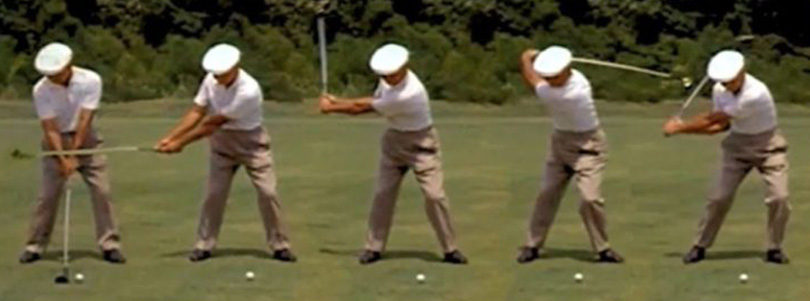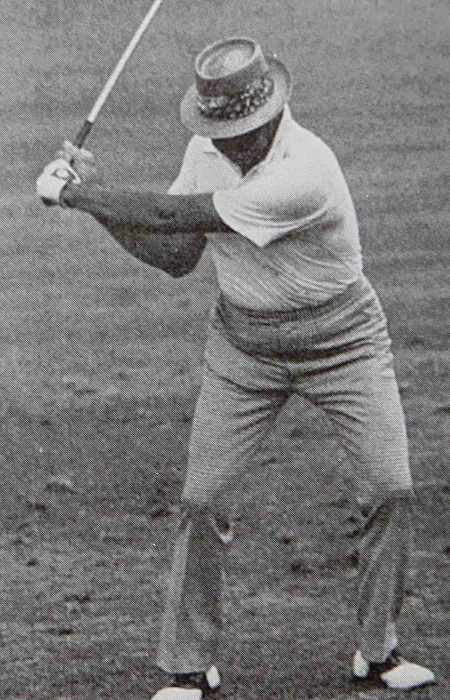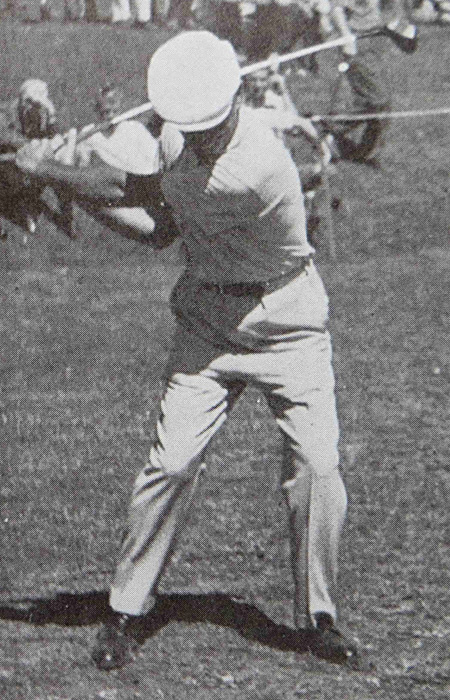Golf Mechanics – Adding Speed to Your Swing

Let’s Talk Facts
Players who it the farthest on any professional tour have the greatest hand path and can apply the most force through the handle, effectively translating to more clubhead speed. This means the hands travel on the largest arc while managing the ability to repeatedly find the sweet spot.
What if you can layer in simple pieces that allow you to swing faster while limiting the variables at play?
By managing the COM (center of mass) and increasing your hand path, you’re in position to gain club speed and shoot lower scores. There’s a direct correlation to clubhead speed and potential handicap, put simply, the faster you can move a golf club the higher your ceiling.
If someone could train you to hit the ball more solidly, increase your club speed and ball speed, AND manage the curve of your ball-flight, you might finally lower your handicap and win a few bucks off your buddies.
Let’s keep it simple and start with some adjustments that will help the majority of golfers, no matter your age or skill level.
As you might have read in our last two articles, it’s important to find equipment that allows you to optimize launch angles and spin rates, along with understanding your body’s physical abilities as an athlete. It’s useless to hit the ball hard if it’s spinning too much and you can’t keep it on the planet. Secondly, it’s no secret that as we age, we start losing the range of motion in our hips and spine. In particular, internal hip rotation tends to become limited due to lifestyle from too much sitting, and we gradually lose the ability to flex and extend our spine as we age. With proper mobility and stability protocols, we can increase our ability to swing a golf club with speed, over the long haul. Heck, this is the one game you can truly play to the grave, so why not do it!?
Let’s Talk Speed & Basic Mechanics
Even if you’re a junior golfer, middle aged hack, or older golfer looking for more speed, let’s dive into some of the clues right in front of us on every professional tour, present and past.
Golfers who hit the ball far, straight, and without injury do the following:
• They slant their hips, positioning the body to use the ground effectively
• They create a large hand path
• They create 3”-5” of linear force toward the target
How Do I Start?
First, you can externally rotate your feet and knees at address. The average tour golfer flares their feet 20-30 degrees at address. This might look goofy to you at first, until you make your first swing and feel the subsequent freedom and power….and you see yourself on camera and realize most tour pros flare their feet! The golfers who don’t flare their feet are either hyper-mobile with internal hip rotation, are chronically injured (Jason Day, Michelle Wie) or have a number of vertical components in their swing which can make their impact matchups more difficult to pattern. In other words, you probably don’t have the time to beat millions of golf balls to replicate Webb Simpson’s matchups and ridiculous timing of his rate of closure. Works for him but it’s not exactly ideal. The other end of the spectrum would be Dustin Johnson who flares his feet, slants the hips, creates depth with a large moment arm, uses the ground effectively, and has one of the slowest rates of closure on tour. All that basically means he hits it far and knows it’s going pretty straight. Other golfers who flare their feet are Tiger Woods, Bryson DeChambeau, Mickey Wright and the great Sam Snead. By flaring our feet and externally rotating the knees at address, we relieve the ankle and knee joints of unnecessary strain while allowing the pelvis to move with more freedom, increasing rotation and the ability to create more linear force. More force equals more speed, while decreasing our chance of injury…. Yes please.

What’s Next?
The easiest way to ensure your hips are slanting is to allow your knees to change flex. As you work your way from address to the top of the backswing, the lead knee will increase its flex while the trail knee extends. This change in flex allows the hips to rotate and slant, keeping your COM (center of mass) centered and allowing the pressure to shift into the trail heel. BOOM! Now you look like Hogan in his heyday. There are some golfers who keep their knees flexed but many of them have chronic back pain, are hypermobile, or don’t hit it very far. Let’s take a hard pass on all that. Even if you’re the rare individual with massive amounts of internal hip rotation in the trail leg, you should still change flex in your knees to allow for a powerful, centered pivot and the ability to aggressively shift pressure down and forward (linear force) into the lead leg in transition….all without going into excessive secondary axis tilt or early extension. Restricting your knees and hips is for the birds, not the birdies.
Tell Me More
When going from address to the top of your backswing, allow your neck to tilt with your shoulders. In other words, allowing the lead ear to ‘listen to the ground’ will ensure your shoulders are rotating and side bending so that you’re maintaining your inclination to the ground. Golf is the one strange sport where it’s played on a roughly 45* angle to the ground. This means your pelvis and shoulders should maintain an inclination to the ground allowing you to maintain proprioception and the positioning your spine so the lead arm can reach across your chest. Further, changing the flex in your knees and tilting the neck ensures were creating depth, a powerful pivot, and the ability to swing hard while controlling the low point and making solid contact. This is an important component that can be measured with a face-on camera angle…. Just make sure the logo on your hat is moving in the same direction as your shoulders…. If you’re a right-handed golfer, allow the left ear to listen to the ground on your backswing while the trail side gets long. Your head will swivel without moving excessively up, down, away or towards your target. You can practice this with your head on a wall, ensuring your head stays in place while creating athletic and dynamic positions with the pelvis and spine. These are simple tips that are almost guaranteed to increase your moment arm without overloading, all while managing your COM and increasing your GRF’s. If that doesn’t sound like fun, then pick up bowling or darts.
Last Piece
Without going into too much detail, proficient ball-strikers tend to extend their trail wrist while keeping a relatively neutral lead wrist. To extend the trail wrist you would dorsi-flex the back of your hand towards you. This ensures we’re loading the trail arm for stored power, while keeping the clubface relatively square. If you extend the lead wrist this can lead to an open club face and all sorts of pitfalls. Let’s keep the lead wrist neutral and the trail wrist extended.

Conclusion
• Externally rotate your feet at address approximately 20*-30*
• Allow your knees to change flex
• Listen to the ground with your lead ear on the backswing
• Feel a ‘long’ trail side to the top of
• Get your weight forward in transition and watch Sam Snead swing videos
• Practice with your head on a wall so you have instant feedback with three dimensional movements
• Keep the lead wrist neutral and extended the trail wrist
To learn more about your unique physical characteristics and ideal impact matchups find a teaching pro who knows their stuff. Good luck on your journey to hitting it farther and shooting lower scores.



